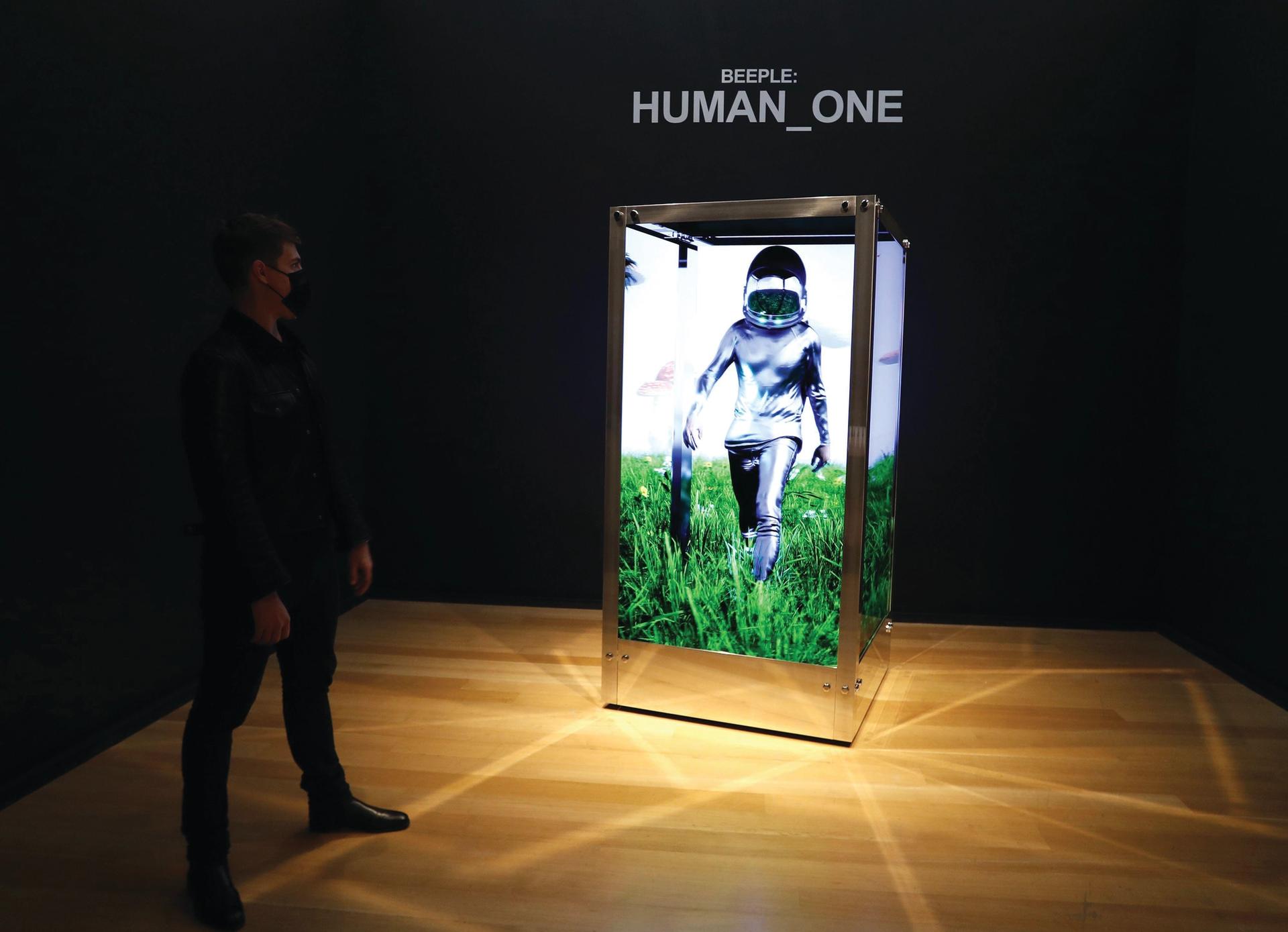The year 2021 started badly. The number of deaths from Covid-19 spiked in January, at more than 17,000 per day, and across the world countries went into lockdown. The art trade—once again—pressed the pause button; art fairs were cancelled or postponed. As in 2020, auctions were shifted online, with sharply reduced offerings, and galleries scrambled to remain connected to their collectors through email or zoom meetings. Online viewing rooms proved a disappointment, although galleries found that the shortfall in sales was compensated by a reduction in costs—of travelling, exhibiting and entertaining clients in posh restaurants.
But the year was also punctuated by three events that shook the market to its core.
The first came in March when, for the first time, Christie’s offered at auction a NFT (non-fungible token) corresponding to a compilation of 5,000 small online-only works by the digital artist Beeple (aka Mike Winkelmann). The starting price for Everydays: the First 5000 Days was just $100 and the auction house accepted payment in cryptocurrency, again for the first time. After a slow start, a last-minute burst of bids saw it rocket to $60.2m ($69.3m with fees), selling to the crypto entrepreneur Vignesh Sundaresan, who goes by the pseudonym MetaKovan.
Jaw dropping
The sale had a galvanising effect on the market for NFTs, and others quickly racked up similarly eye-watering prices: $11.7m for CryptoPunk 7523 (2017) at Sotheby’s, $6.6m for another Beeple via Nifty Gateway, and, in November at Christie’s, $28.9m for Beeple’s generative sculpture Human One (2021). That story is still being written, with more and more fans joining the party and a bewildering number of initiatives being created in this space. They range from 10,000 NFTs being made of the British Museum’s The Great Wave (1831) by Hokusai to fashion brand Burberry releasing limited edition “drops”—and those are just, erm, drops in the ocean of all the NFT-related projects coming out as I write.

Beeple's Human One
Credit: UPI/Alamy Stock Photo
The second big story was the rise and rise of Asian buying, with a new generation frantically bidding for international contemporary art, notably the hottest young artists. In October at Sotheby’s Hong Kong, works by Loie Hollowell, Jadé Fadojutimi and Joel Mesler soared well above pre-sale estimates. The same frenzy was seen at Frieze London the following week, when again Asian bidders chased work by Fadojutimi as well as other new names such as Cinga Samson, Oli Epp and Trey Abdella, propelling their prices well over expectations.
That same Sotheby’s sale saw the third big story of the year—the £18.6m ($25.4m) paid for Banksy’s Love is in the Bin (2018), the infamous work that had initially been auctioned as Girl with a Balloon in 2018 for a then-record £1m but had partly shredded when the hammer fell.
The European buyer kept the renamed work (now a “new” work, according to the auction house) and was rewarded with a sensational return on their investment. The buyer this year was from Asia and paid in cryptocurrency, according to the industry news site The Canvas, which said that she or he was quite new to the art market and had never bought from a gallery.
Valid arguments
The story of the Banksy neatly encompasses all three elements of the year: the impact of Asian buying power; the increasing influence of cryptos and those who have made fortunes in the alternative currencies; and a realignment of art scholarship. Because—make no mistake—the purchaser was buying a stunt, an investment and a likely attraction for a private museum—but certainly not a significant work of art, apart from its well-publicised back story.
The sale makes us question the whole structure of validation of art, when a work by an artist largely disregarded by the traditional art establishment was able to command the same price as, say, Picasso’s Homme et enfant (1969), which made $24.4m at the Bellagio casino’s pop-up auction in Las Vegas—also orchestrated by Sotheby’s—in October. Remember the KAWs phenomenon of three years ago, another street artist whose work sold for a (then) astounding $14.8m at Sotheby’s in Hong Kong in 2019? That, it now seems, was the thin end of the wedge.


